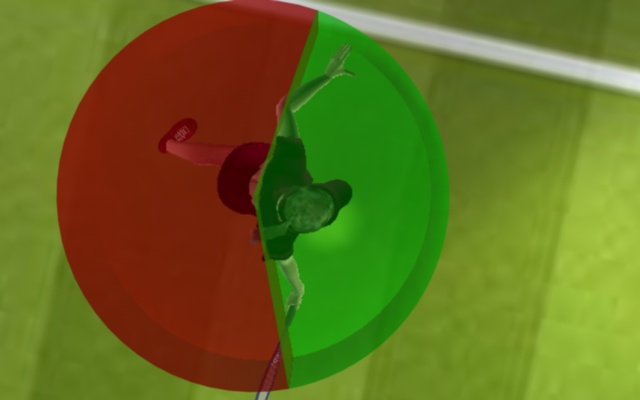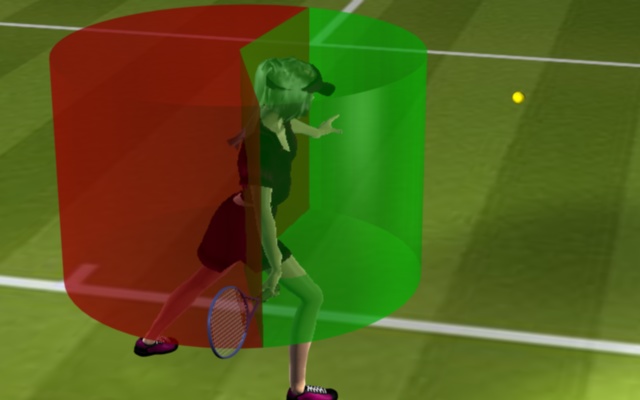The Zone of Experience
The zone of experience (ZofE) represents the region in front of your upper body in which you do your best work. Events and activities in this zone are easiest to see, feel, and manipulate. Your upper extremities enjoy their maximum range of unobstructed motion and comfort within this area, and hand-eye coordination is optimized. So why would you reach behind your back when preparing to strike a ball? Of course, you wouldn't, you shouldn't, but you do. Often we don't get our feet right, don't rotate our hips, don't get our shoulders back, and throw the racket hand behind our backs in the backswing. The results are seldom pretty. Indeed, the principal reason for setting a proper stance with the feet is to free the hips, spine, and shoulders in position to perform the lion's share of the backswing so you don't have to reach back beyond the ZofE. Keeping the entire stroke comfortably within the ZofE is just as important for short strokes like the volley or two-handed backhand as it is for your forehand drive.

Players often skimp on the shoulder turn when rushed, trying to hit softly, or just feeling lazy. An adequate backswing is not only about generating pace. It is not just for the pros. It is all about keeping both racket preparation and ball contact comfortably within the Zone of Experience. If you fail to turn your shoulders when hitting, say, a drop volley, your only recourse is to drag your arm back, opening up your hitting shoulder and reducing your hitting arm to an impotent, flaccid appendage, incapable of manipulating even a 10-ounce racket and a 2-ounce ball. This is why so many of your drop shots don't clear the net; in that position, your arm just isn't strong enough to heft it over the net strap.

